Abstract
1. The activity of lung irritant receptors during pneumothorax, hyperpnoea and pulmonary congestion has been studied by recording from single vagal nerve fibres from the receptors in rabbits.
2. The receptors were stimulated during induction and during removal of pneumothorax.
3. Pneumothorax caused a greater depression of minute volume in bilaterally vagotomized rabbits, compared with those with intact vagus nerves.
4. Hyperpnoea due to breathing through an added dead space increased the discharge of the receptors. Experiments on paralysed and artificially ventilated rabbits showed that this was not a direct action of the asphyxial changes in blood gas tensions.
5. Pulmonary congestion, induced by inflating a balloon in the left atrium, stimulated the receptors in paralysed artificially ventilated rabbits.
6. The evidence that the receptors cause vagal reflex hyperpnoea and bronchoconstriction is discussed, together with their role in the reflex ventilatory and bronchomotor changes in the conditions studied.
Full text
PDF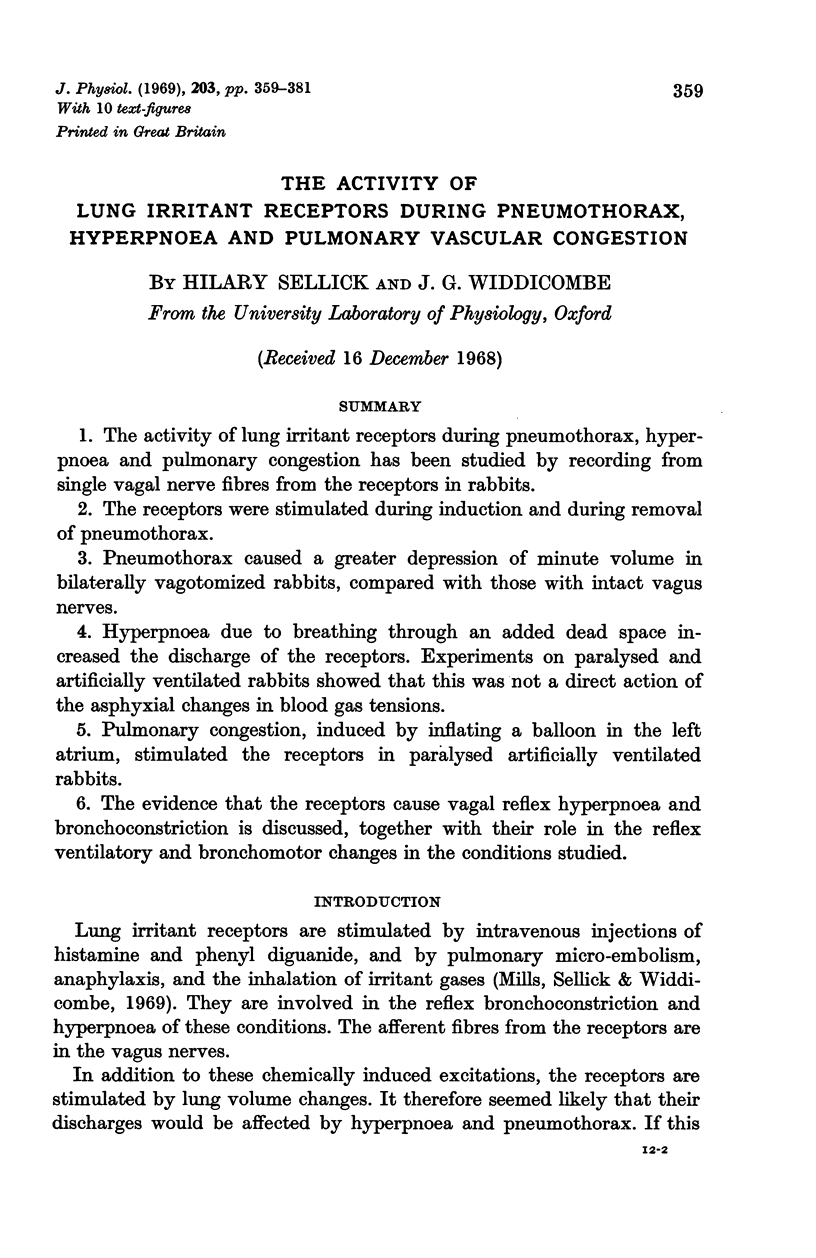
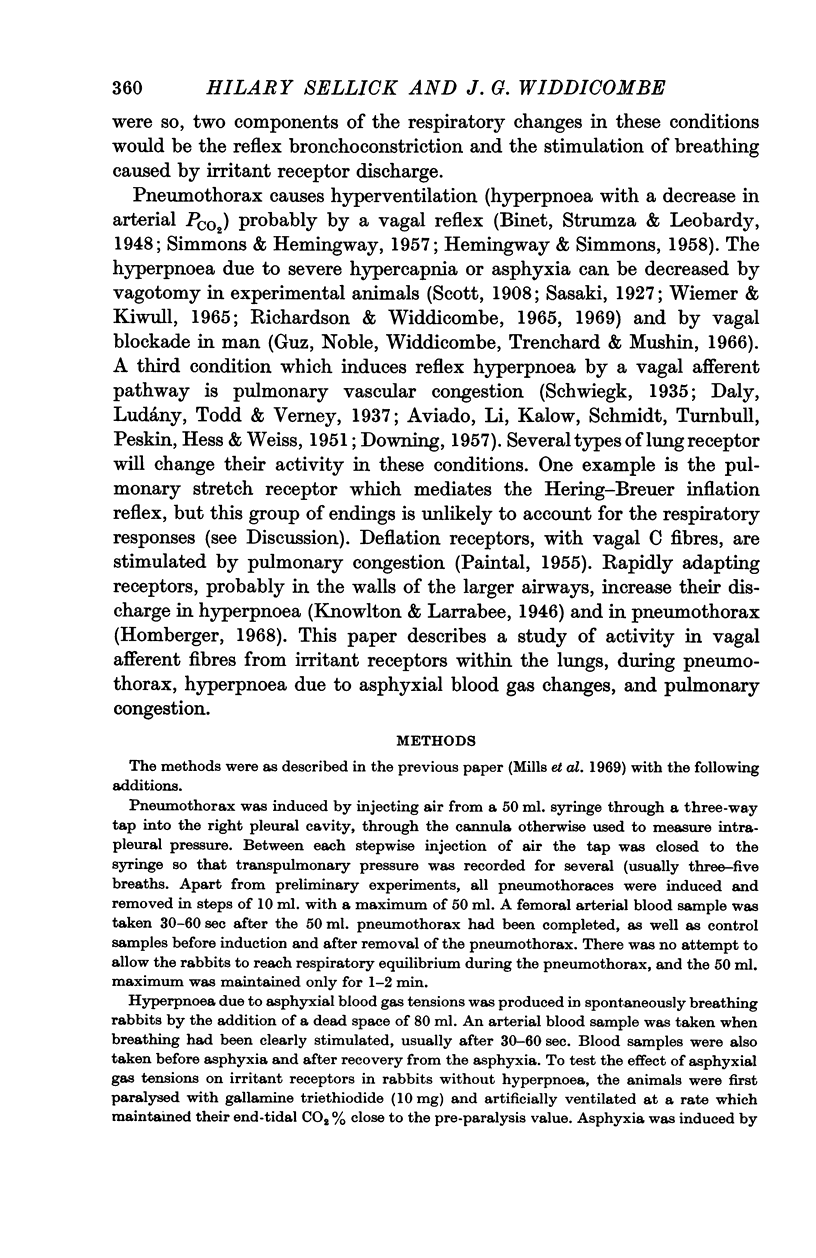

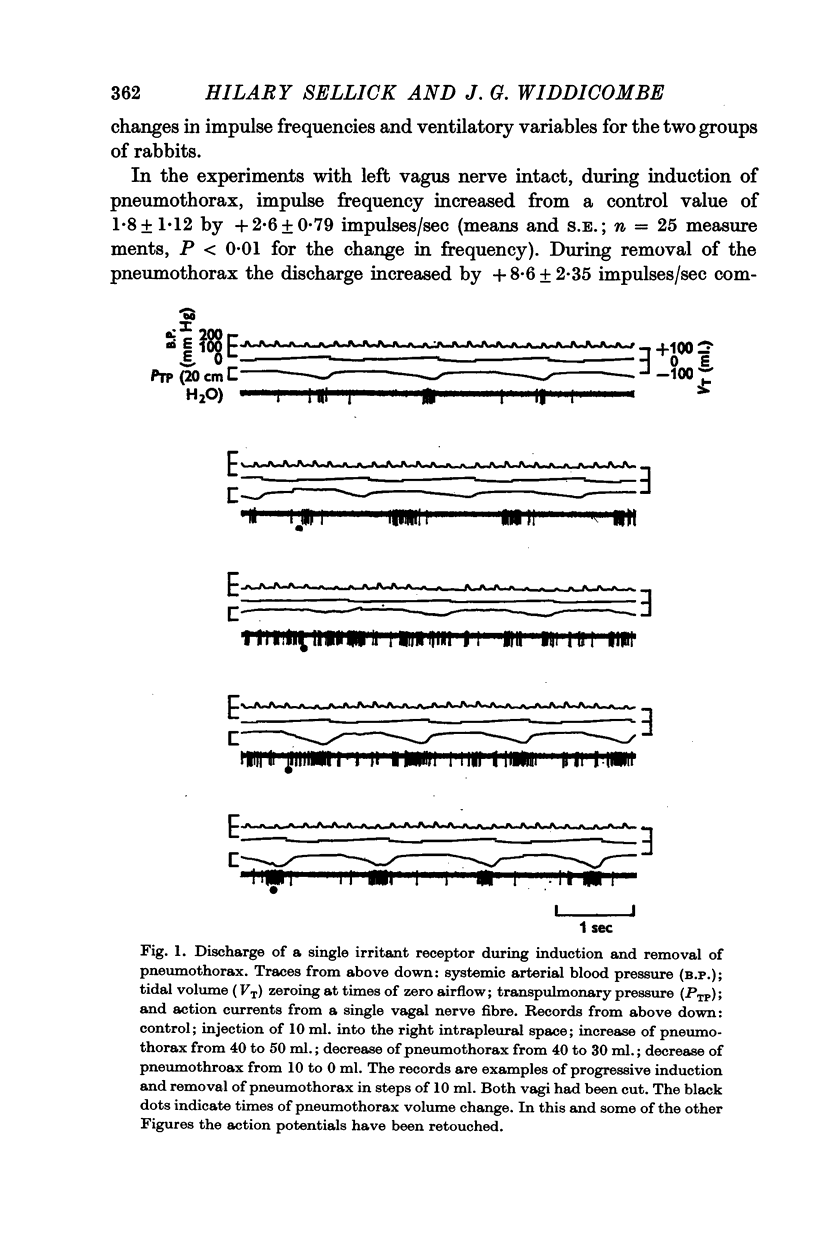
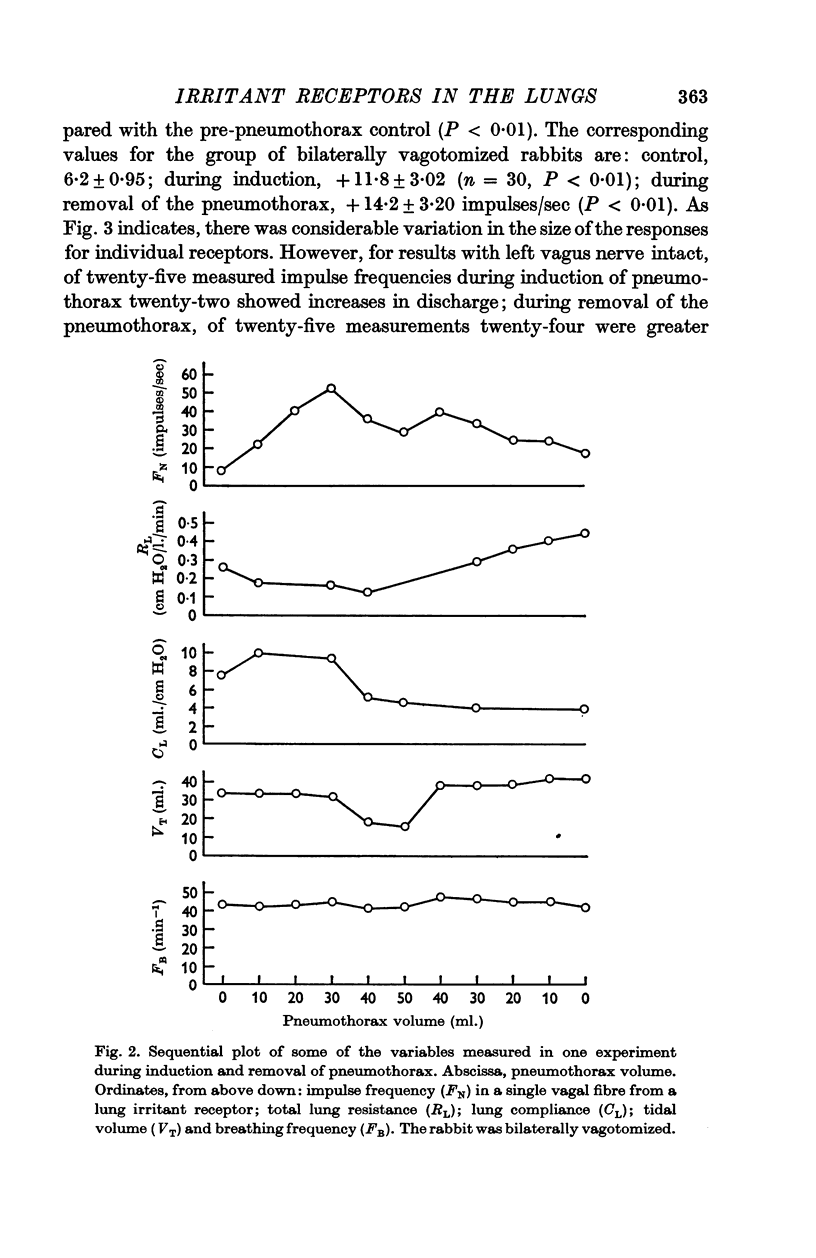
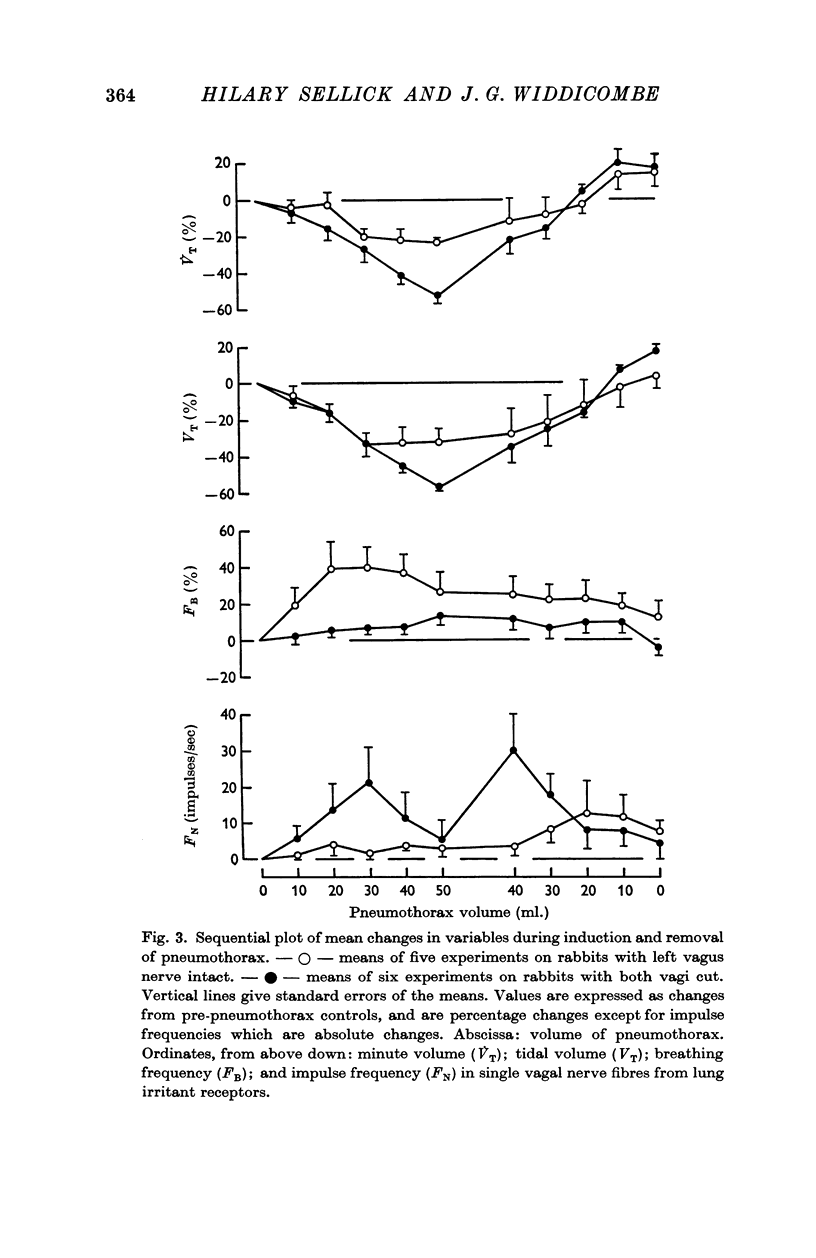
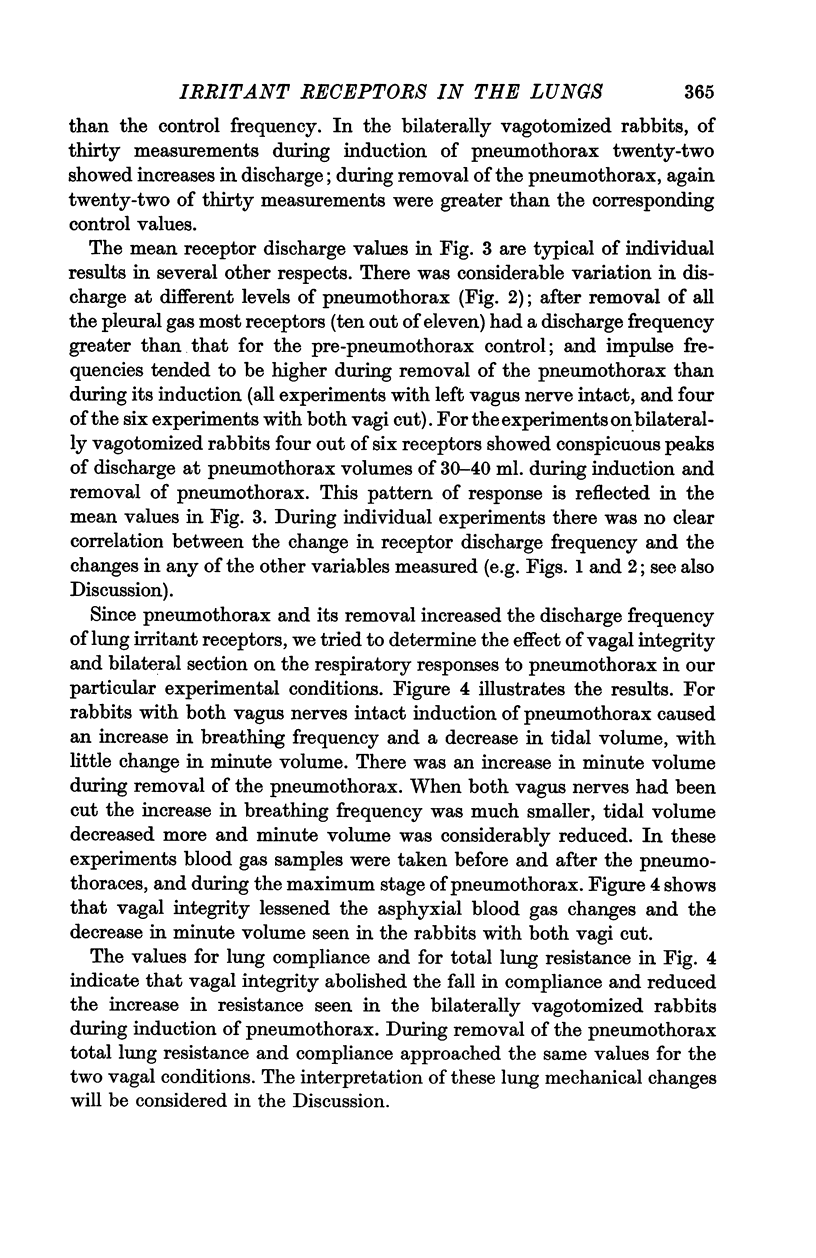
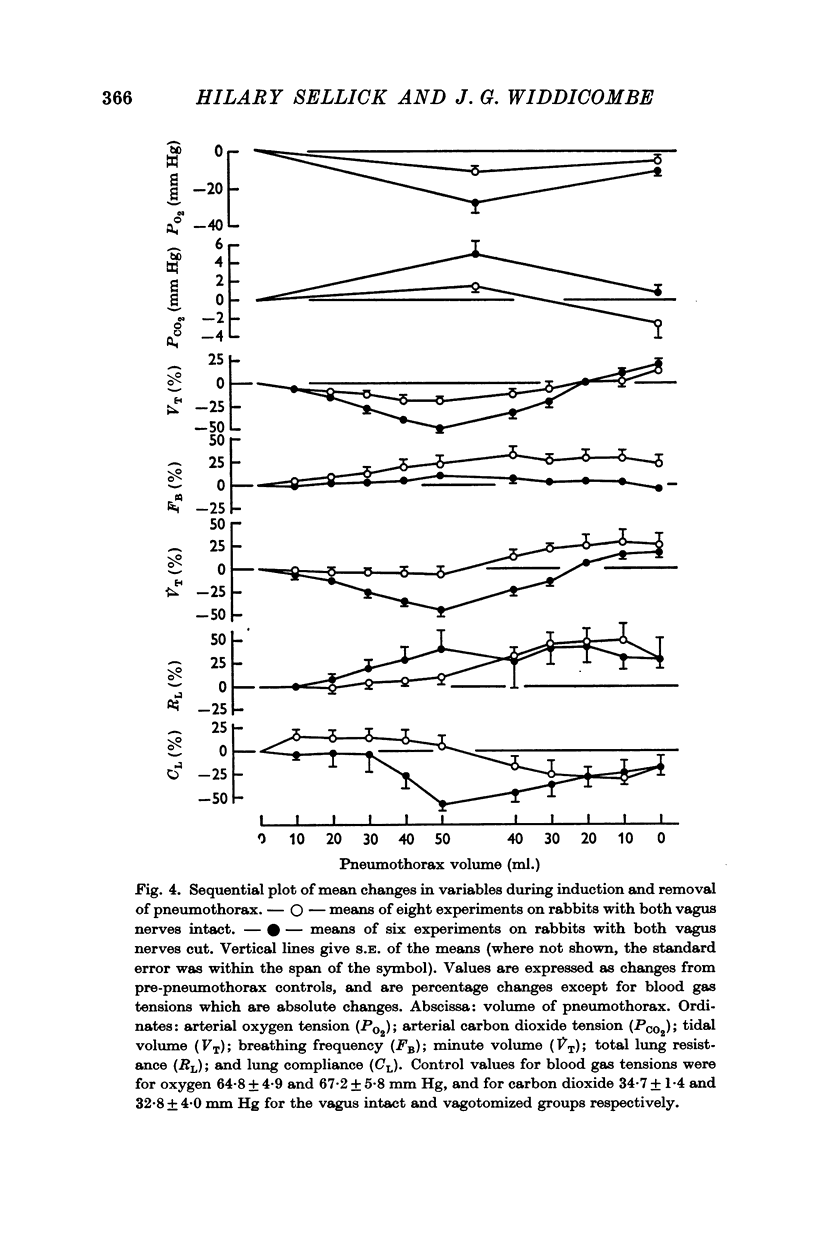

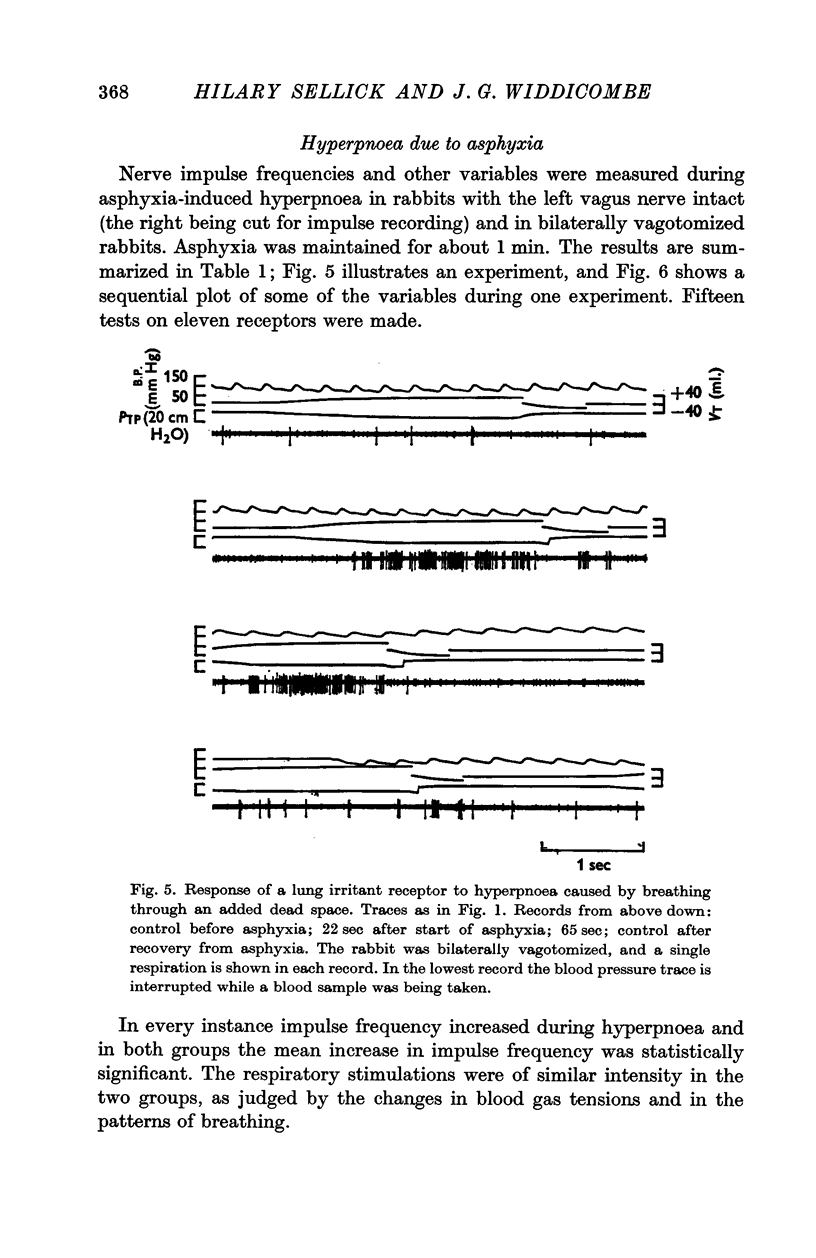


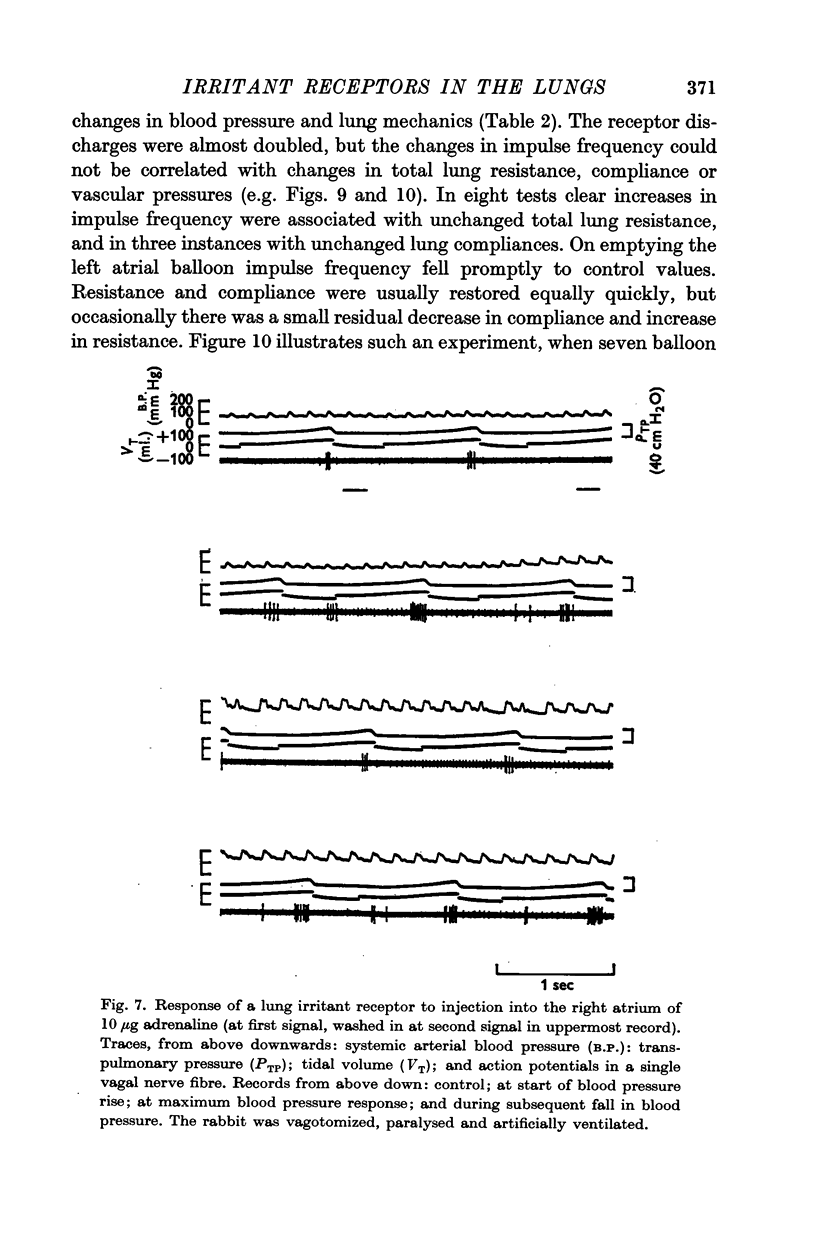

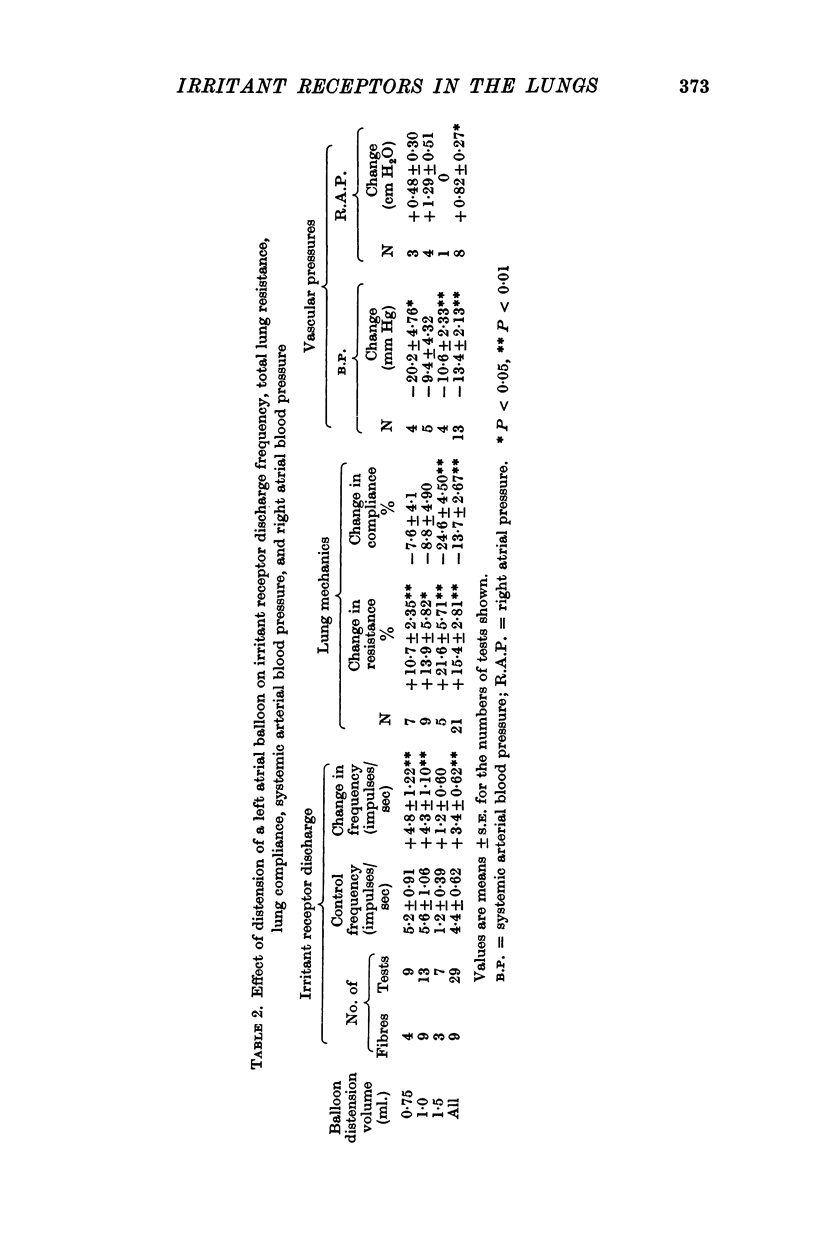



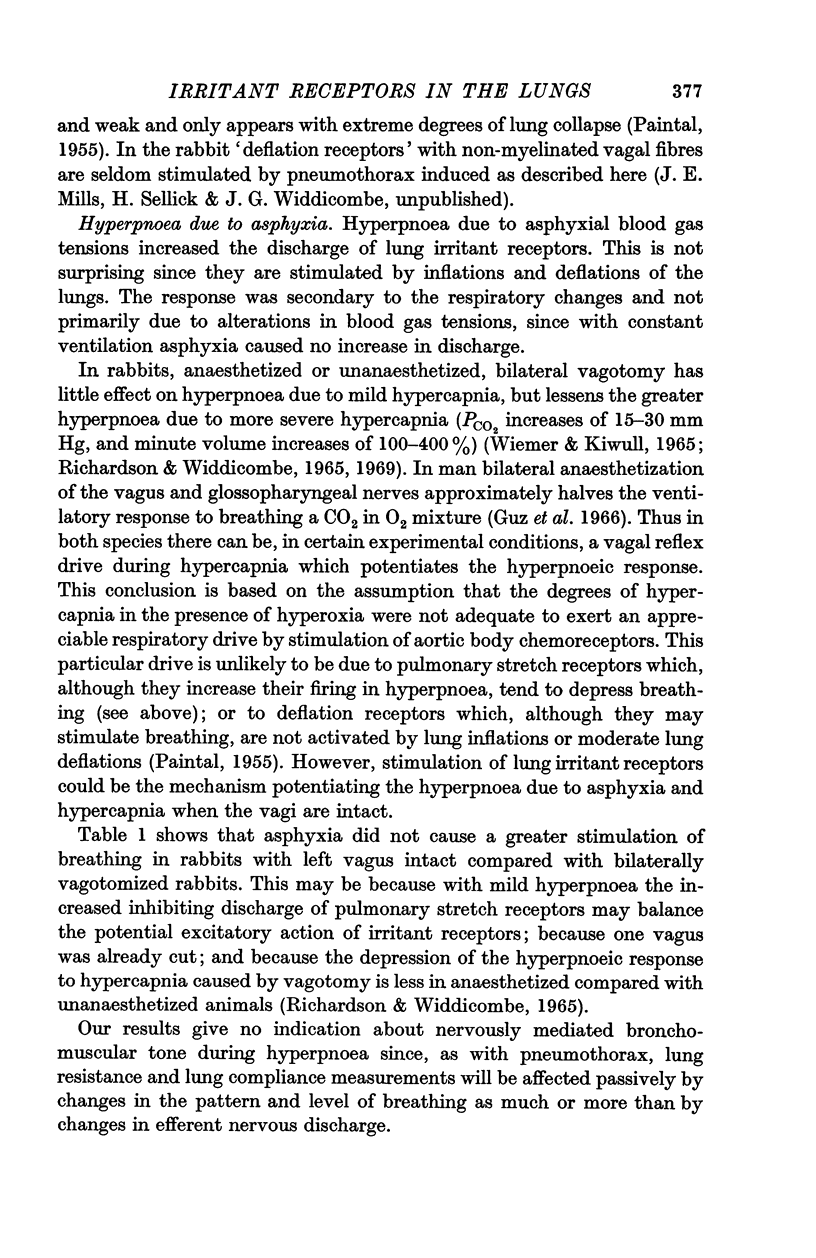

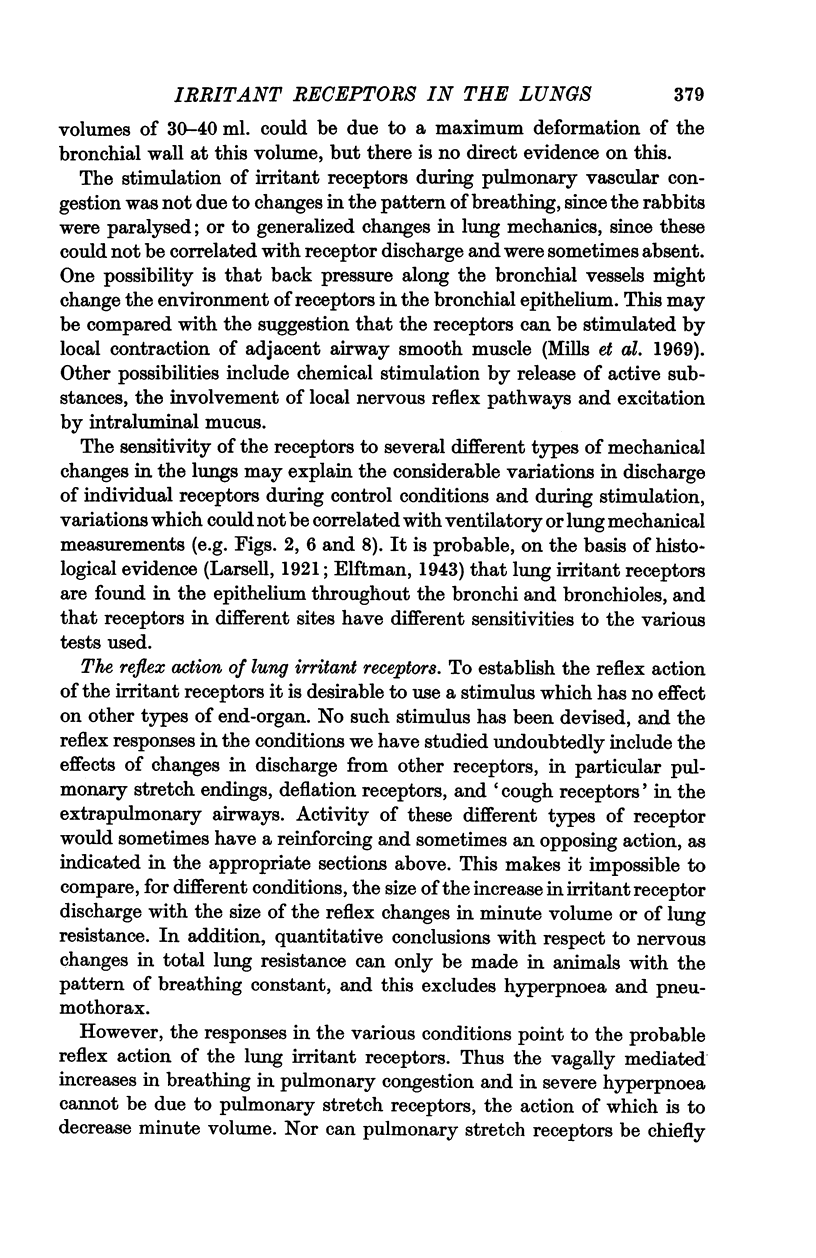
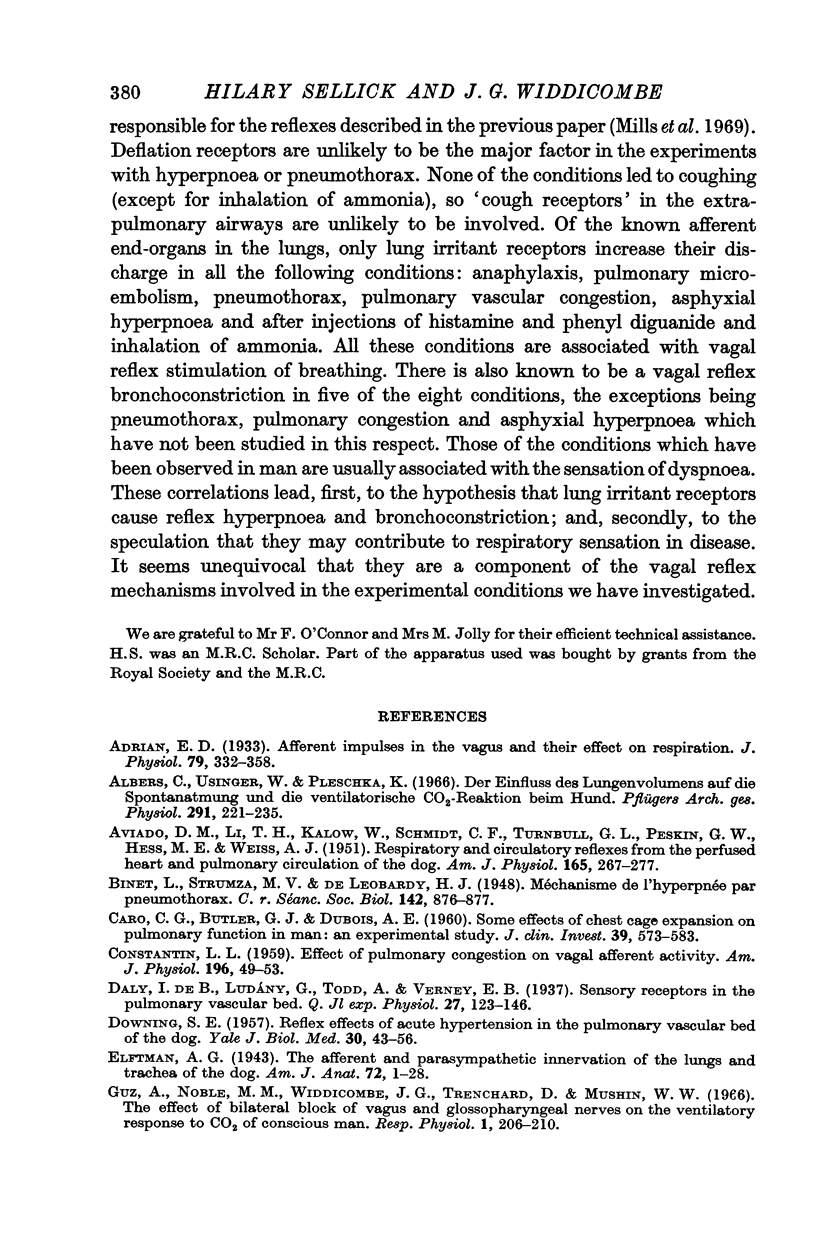
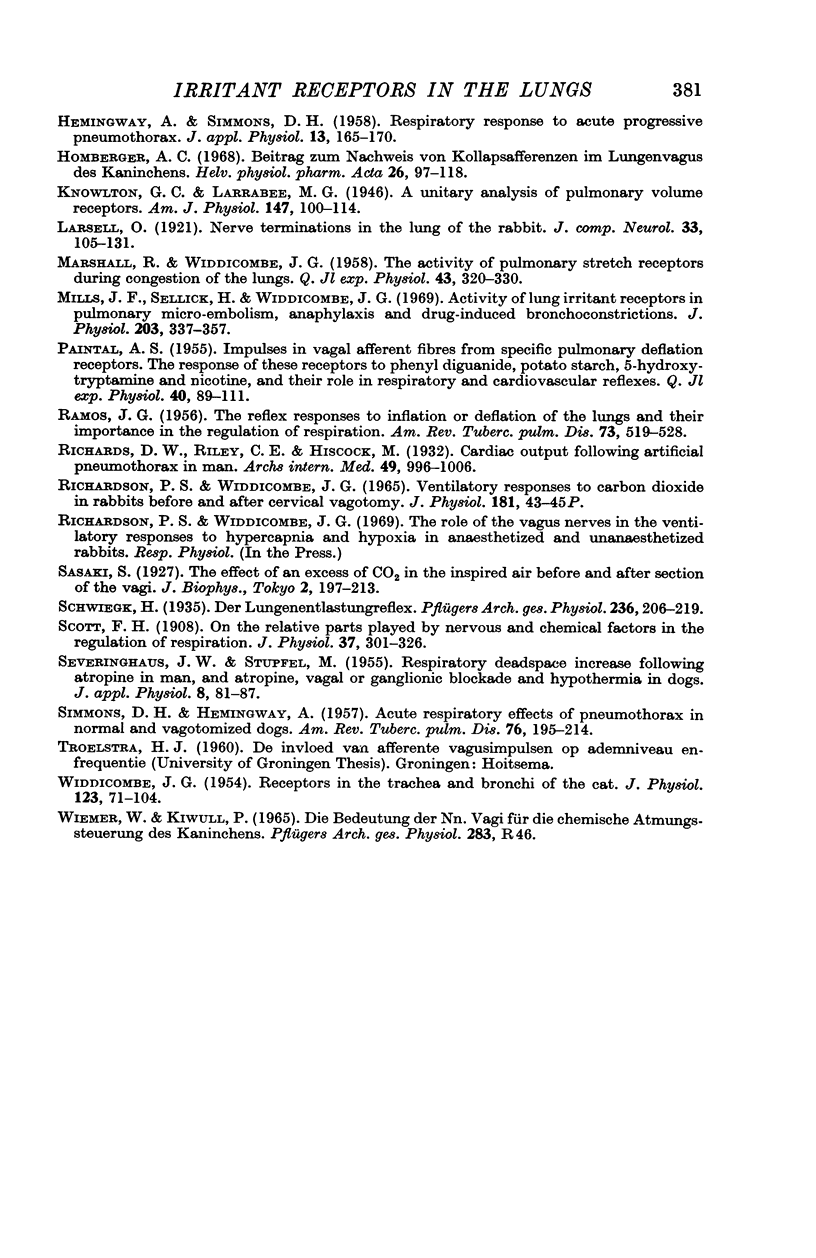
Selected References
These references are in PubMed. This may not be the complete list of references from this article.
- AVIADO D. M., Jr, LI T. H., KALOW W., SCHMIDT C. F., TURNBULL G. L., PESKIN G. W., HESS M. E., WEISS A. J. Respiratory and circulatory reflexes from the perfused heart and pulmonary circulation of the dog. Am J Physiol. 1951 May;165(2):261–277. doi: 10.1152/ajplegacy.1951.165.2.261. [DOI] [PubMed] [Google Scholar]
- Adrian E. D. Afferent impulses in the vagus and their effect on respiration. J Physiol. 1933 Oct 6;79(3):332–358. doi: 10.1113/jphysiol.1933.sp003053. [DOI] [PMC free article] [PubMed] [Google Scholar]
- Albers C., Usinger W., Pleschka K. Der Einfluss des Lungenvolumens auf die Spontanatmung und die ventilatorische CO2-Reaktion beim Hund. Pflugers Arch Gesamte Physiol Menschen Tiere. 1966;291(2):221–235. [PubMed] [Google Scholar]
- CARO C. G., BUTLER J., DUBOIS A. B. Some effects of restriction of chest cage expansion on pulmonary function in man: an experimental study. J Clin Invest. 1960 Apr;39:573–583. doi: 10.1172/JCI104070. [DOI] [PMC free article] [PubMed] [Google Scholar]
- COSTANTIN L. L. Effect of pulmonary congestion on vagal afferent activity. Am J Physiol. 1959 Jan;196(1):49–53. doi: 10.1152/ajplegacy.1958.196.1.49. [DOI] [PubMed] [Google Scholar]
- DOWNING S. E. Reflex effects of acute hypertension in the pulmonary vascular bed of the dog. Yale J Biol Med. 1957 Sep;30(1):43–56. [PMC free article] [PubMed] [Google Scholar]
- Guz A., Noble M. I., Widdicombe J. G., Trenchard D., Mushin W. W. The effect of bilateral block of vagus and glossopharyngeal nerves on the ventilatory response to CO2 of conscious man. Respir Physiol. 1966;1(2):206–210. doi: 10.1016/0034-5687(66)90017-x. [DOI] [PubMed] [Google Scholar]
- HEMINGWAY A., SIMMONS D. H. Respiratory response to acute progressive pneumothorax. J Appl Physiol. 1958 Sep;13(2):165–170. doi: 10.1152/jappl.1958.13.2.165. [DOI] [PubMed] [Google Scholar]
- Homberger A. C. Beitrag zum Nachweis von Kollapsafferenzen im Lungenvagus des Kaninchens. Helv Physiol Pharmacol Acta. 1968;26(1):97–118. [PubMed] [Google Scholar]
- MARSHALL R., WIDDICOMBE J. G. The activity of pulmonary stretch receptors during congestion of the lungs. Q J Exp Physiol Cogn Med Sci. 1958 Jul;43(3):320–330. doi: 10.1113/expphysiol.1958.sp001336. [DOI] [PubMed] [Google Scholar]
- Mills J. E., Sellick H., Widdicombe J. G. Activity of lung irritant receptors in pulmonary microembolism, anaphylaxis and drug-induced bronchoconstrictions. J Physiol. 1969 Aug;203(2):337–357. doi: 10.1113/jphysiol.1969.sp008867. [DOI] [PMC free article] [PubMed] [Google Scholar]
- PAINTAL B. A. Impulses in vagal afferent fibres from specific pulmonary deflation receptors: the response of these receptors to phenyl diguanide, potato starch, 5-hydroxytryptamine and nicotine, and their rôle in respiratory and cardiovascular reflexes. Q J Exp Physiol Cogn Med Sci. 1955 Apr;40(2):89–111. doi: 10.1113/expphysiol.1955.sp001116. [DOI] [PubMed] [Google Scholar]
- SEVERINGHAUS J. W., STUPFEL M. Respiratory dead space increase following atropine in man, and atropine, vagal or ganglionic blockade and hypothermia in dogs. J Appl Physiol. 1955 Jul;8(1):81–87. doi: 10.1152/jappl.1955.8.1.81. [DOI] [PubMed] [Google Scholar]
- SIMMONS D. H., HEMINGWAY A. Acute respiratory effects of pneumothorax in normal and vagotomized dogs. Am Rev Tuberc. 1957 Aug;76(2):195–214. doi: 10.1164/artpd.1957.76.2.195. [DOI] [PubMed] [Google Scholar]
- Scott F. H. On the relative parts played by nervous and chemical factors in the regulation of respiration. J Physiol. 1908 Sep 16;37(4):301–326. doi: 10.1113/jphysiol.1908.sp001272. [DOI] [PMC free article] [PubMed] [Google Scholar]
- WIDDICOMBE J. G. Receptors in the trachea and bronchi of the cat. J Physiol. 1954 Jan;123(1):71–104. doi: 10.1113/jphysiol.1954.sp005034. [DOI] [PMC free article] [PubMed] [Google Scholar]


